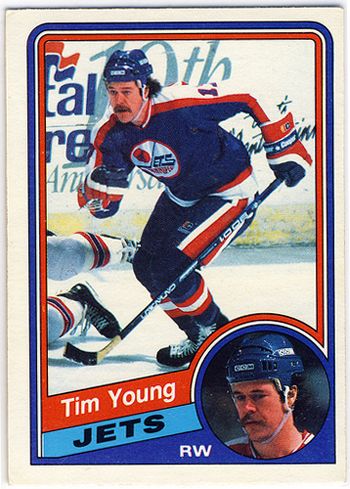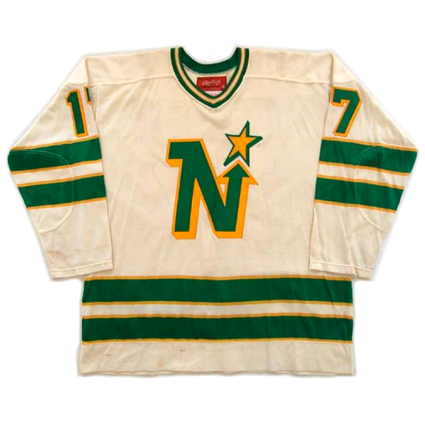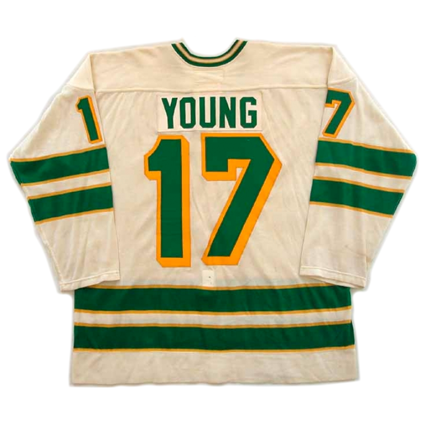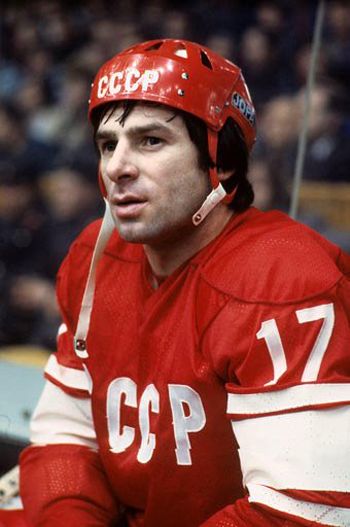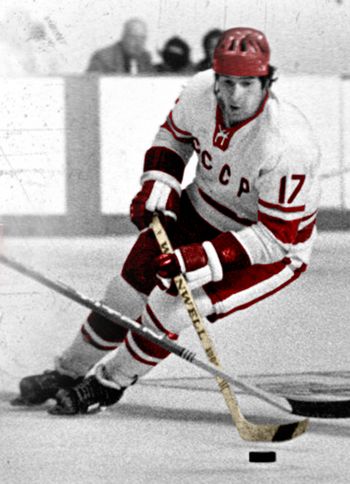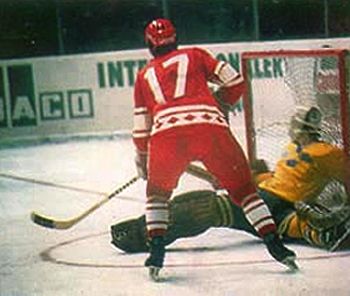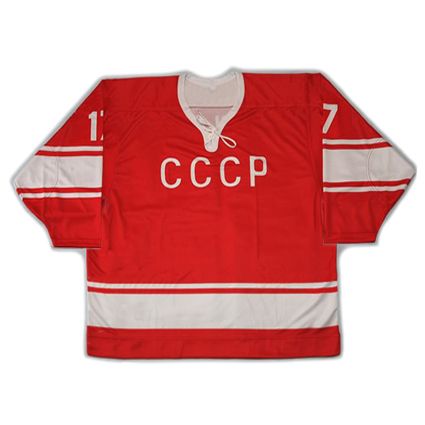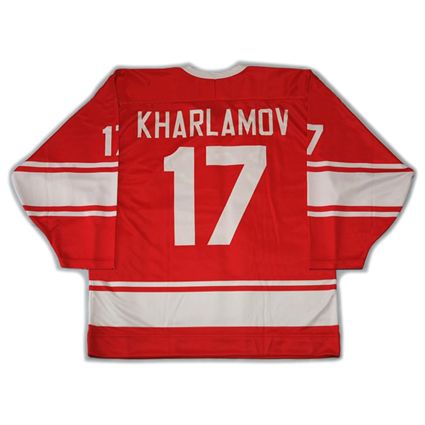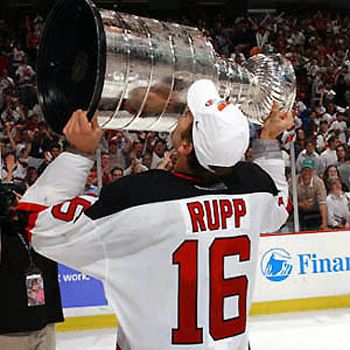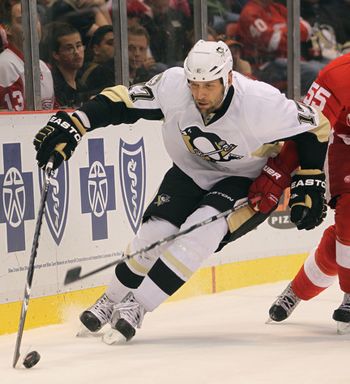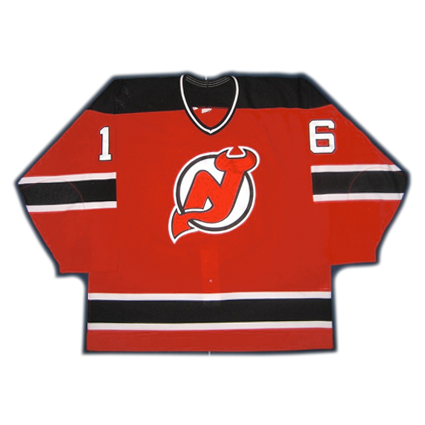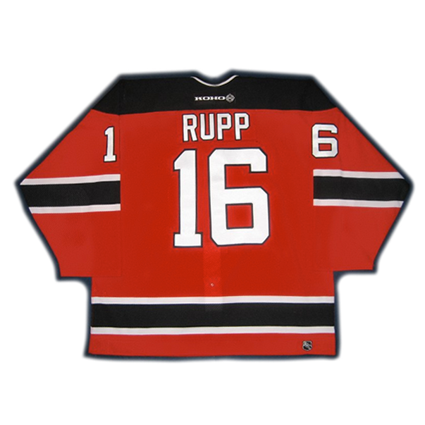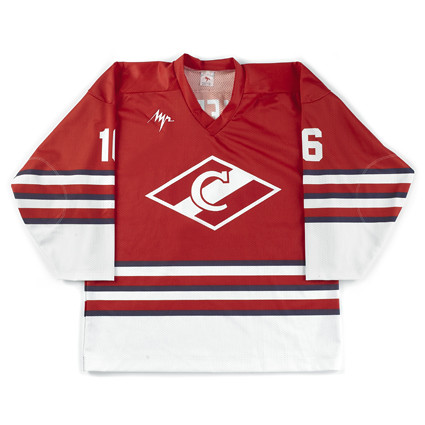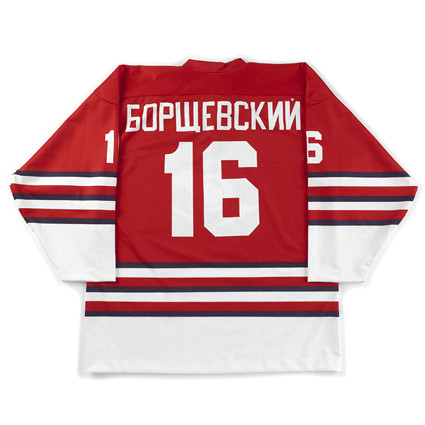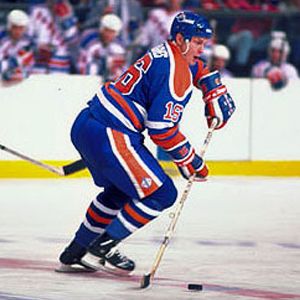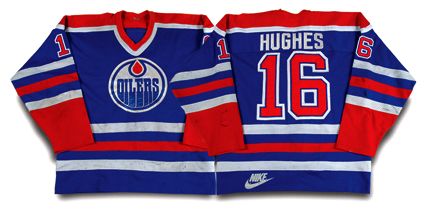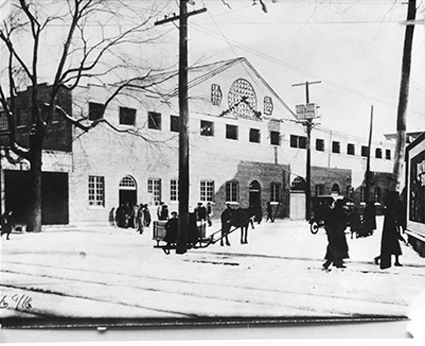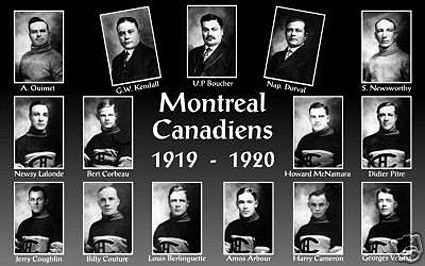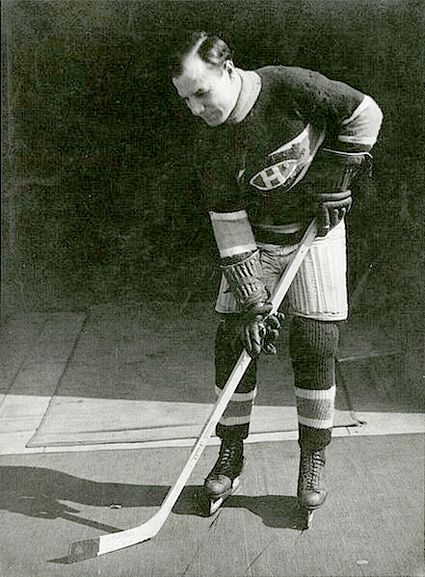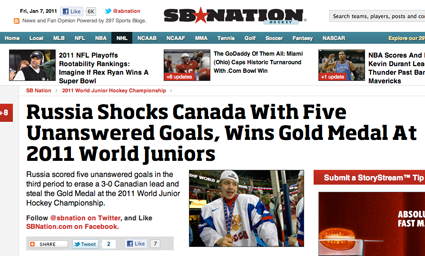Saturday, January 15, 2011
1976-77 Minnesota North Stars Tim Young Jersey
After leading the Ottawa 67's in scoring in 1973-74 with 106 points, and then averaging 2.33 points per game with 56 goals and 107 assists for 163 points in 70 games, good for second overall in QMJHL scoring to current Washington Capitals coach Bruce Boudreau, Tim Young was drafted 16th overall by the Los Angeles Kings in the 1975.
Oddly, the Kings would trade their brand new first round pick Young two months later, before he even suited up for training camp, much less a game, for the Minnesota North Stars second round pick in the 1976 draft!
After 13 games with the New Haven Nighthawks of the AHL, Young was called up to make his NHL debut by the North Stars during which he scored his first NHL goal. He competed in 63 games over the rest of the season and had a solid 18 goals and 51 points to lead the lowly North Stars in scoring for the 1975-76 season despite his late start to his NHL season.
Given the opportunity to play an entire season, Young easily led the team in scoring again in 1976-77 , this time by 26 points over his nearest teammate as the North Stars qualified for the playoffs for the first time in four years. His 95 points would prove to be his career high and placed him fifth overall in league scoring, tied with Gilbert Perreault and ahead of players such as Jean Ratelle, Lanny McDonald and Bobby Clarke. His outstanding season was recognized with a spot in the 1977 NHL All-Star Game.
Young scored 23 goals and 58 points and had nearly identical numbers the following season with 24 goals and 56 points as the struggling North Stars missed the playoffs both seasons, which was not easy to do back then, as 12 of the 17 teams qualified for the postseason during that era.
The highlight of Young's career came during the second of those two seasons when he set a franchise record which still stands to this day with five goals in one game, which came on just five shots and included his first career hat trick on this date in 1979 at Madison Square Garden in a game against the New York Rangers.
The scoring started with Minnesota's Gordie Roberts' goal 2:06 into the game with the first assist going to Young. Young then got his first goal of the game on the power play just 49 seconds later to make it 2-0 after one. Young then completed his hat trick against the Rangers Doug Soetaert with a goal at the mid point of the second period and another at 14:04 to put Minnesota ahead 5-0.
After the Rangers spoiled the shutout 4:38 into the third period, Young struck again on the power play at 8:09 for his forth, now facing Wayne Thomas in goal for New York. After Minnesota's seventh goal Young capped off his remarkable evening and closed out the scoring with his fifth goal of the game with an even strength goal at 14:56 unassisted.
Young was the 21st player in league history to score five goals in a game, but only the second one to do so on just five shots.
The 1978-79 season was the first one following the merger between the North Stars and the Cleveland Barons franchise and the results paid off, along with the addition of some very high draft picks as a result of the team's lowly finish in 1978, and Young and the North Stars made deep runs into the playoffs in both 1980, with a trip to the conference finals followed by their first appearance in the Stanley Cup Finals in 1981.
With the team now playing much better and stocked with higher quality teammates, Young's numbers began to rise once more and opponents no longer could focus their defensive efforts on Young. In 1979-80 had the only 30 goal season of his career with 31, as well as 74 points. During the season he set a team record with goals in six consecutive games and also added 7 points in 15 playoff games.
In 1980-81 he had 245 goals and 66 points during the regular season and posted a strong 17 points in the 12 playoff games he played in during the North Stars trip to the finals.
Young was named the North Stars captain for 1981-82, but was limited by a broken ankle suffered during the off season to just 49 games in which he contributed 41 points. He rebounded in 1982-83 with a 79 games season and chipped in another 53 points.
Prior to the 1983-84 season Young was traded to the Winnipeg Jets and scored 34 points in 44 games in his only season in Winnipeg, who then traded him to the Philadelphia Flyers. He appeared in 20 games for the Flyers but spent the majority of the season with the Hershey Bears of the AHL, where he averaged a point per game before retiring at the end of the season.
Young's final NHL totals were 195 goals and 341 points for 536 points in 628 games and one memorable five goal, six point night.
Today's featured jersey is a 1976-77 Minnesota North Stars Tim Young jersey as worn during his 95 point season which he led the North Stars in scoring and placed fifth overall in the league.
This style jersey was used by the North Stars from 1975-76 until 1977-78 and was the North Stars first use of drop shadowed numbers. It would be the second of five styles the North Stars would wear.
Unfortunately we could not find video of Young's five goal game, which we recall watching live at the time, and this is the only video of Young currently on YouTube, where he mixes it up with the Maple Leafs Borje Salming. Young can be seen wearing the fourth generation North Stars jersey which has the addition of the black trim.
Labels:
Minnesota North Stars,
Young Tim
Friday, January 14, 2011
1972 Soviet Union National Team Valeri Kharlamov Jersey
Considered to be one of the greatest players the game has ever seen, Valeri Kharlamov of the Soviet Union was born on this date in 1948. He joined the Central Red Army club in the Soviet Elite League in 1967-68 and scored two goals in 15 games as a rookie.
Having got his feet wet the season before, Kharlamov made no secret of his prodigious talent the following season when he increased his goal scoring to 37 goals in 42 games of the shorter Soviet League season. Following the season he would make the first of his 11 consecutive World Championship appearances and contributed 13 points in ten games on his way to the first gold medal of his illustrious international career.
In the 1969-70 season Kharlamov averaged a goal per game while playing in 33 contests for Central Red Army in a season which concluded with the first of four consecutive Soviet League championships. He followed that with ten points in nine games on his way to another World Championship gold medal.
Kharlamov won the Soviet League goal scoring title in 1970-71 with a career highs with 40 goals and 52 points in 34 games. He earned his first World Championship All-Star selection when he tallied 17 points in ten games as he was awarded his third consecutive World Championship gold medal, the dominant Soviet Union's 9th in a row.
He one-upped himself by capturing the Soviet League points scoring title in 1971-72, albeit with a lower personal point total that the previous season, with 40 points and was named the Soviet League MVP for the first time. That was not the highlight of Kharlamov's season however, as he introduced himself to the world as he led the Soviet Union to the gold medal at the 1972 Olympic Games in Sapporo, Japan where his 15 points in just five games led all scorers by six points as the world got their first real glimpse of his superior skating and playmaking abilities. Later that spring he was again named to the World Championship All-Star team, but had to settle for the silver medal for the first time.
In case anyone missed his performance in the Olympics, Kharlamov became a true star of international hockey with his performance in the fabled 1972 Summit Series when the best that the Soviet Union had to offer took on an All-Star team of Canadian professionals for the first time ever. While many in Canada assumed that their professional players would easily win all eight games of the series, Kharlamov led the Soviets with two goals in their stunning Game 1 upset of Team Canada on home ice in Montreal. While Canada led by two six minutes in, the Soviets quickly turned the tide, evening the score before the period ended and began to pull away with Kharlamov's two goals in the second on their way to a 7-3 win.
First teamed together in 1968, the line of Boris Mikhailov, Vladimir Petrov and Valeri Kharlamov, dominated international hockey throughout the 1970's
After losing Game 2, Kharlamov contributed another goal in their 4-4 tie in Game 3. After the Soviets 5-3 win in Game 4 in Canada, the series shifted to Moscow in the Soviet Union. When the Soviets came from behind 4-1 to win Game 5, Bobby Clarke of Canada deliberately broke Kharlamov's ankle in Game 6 which enabled the Canadians to stage a comeback and eventually win the series in a dramatic Game 8.
A fourth Soviet League title came in 1972-73 as he scored 32 points in 27 games after recovering from his broken ankle. A return to World Championship gold was powered by an on-from Kharlamov as he racked up 23 points in ten games for the host Soviet Union.
The consecutive championship streak ended in the Soviet League in 1973-74 but the World Championship success continued with another gold in 1974.
Prior to the start of the next season, Kharlamov again participated for the Soviet Union in the 1974 Summit Series, where they took on a team of mainly Canadian professionals from the World Hockey Association, which the Soviets won with a 4-1-3 record. Kharlamov contributed seven points in the eight games.
The Soviet League title returned to Central Red Army in 1974-75 as Kharlamov had a great season with 39 points in 31 games and yet another World Championship gold on the heels of 16 points in 9 games.
For the full desktop wallpaper of this image of Kharlamov, please visit Russian Hockey Digest
While his personal scoring level continued unchanged in 1975-76, Kharlamov had to unusually settle for silver in both the Soviet League and the World Championships. All was not lost however, as the Soviet Union dominated the 1976 Olympic Games in Innsbruck, Austria to win the second gold medal of Kharlamov's career. He would be one of four Soviet players to tie for the tournament scoring lead with ten points in five games, including his game winning goal in their final game against Czechoslovakia.
Of interest, it was during the Soviet League season that the Central Red Army club took a break from domestic competition and participated in the first Super Series of exhibition games in North America against teams from the NHL which included a win over the New York Rangers, the enthralling tie against Montreal on New Year's Eve, called by many the greatest game of hockey ever played, another win, this time over the Boston Bruins and the notorious game against the Philadelphia Flyers when Kharlamov was targeted with an elbow to the head from the blind side which caused the Soviet coach to pull his team off the ice when to penalty was called.
That spring he was seriously injured in a car accident, which put his hockey career in jeopardy and cost him a chance to compete in the 1976 Canada Cup.
While Kharlamov was limited to 21 games because of recovery time from his injuries, the 1976-77 saw Central Red Army begin an era of dominance unlike any ever seen before with the first of 13 consecutive titles but the national team would fall to third place and the bronze medal at the World Championships.
Kharlamov would have one of his best offensive seasons when he totaled 42 points in only 29 games during the 1977-78 domestic season and a new run of gold medals would begin at the 1978 World Championships, the first of five in a row for the Soviet Union.
He was in peak form in 1978-79, scoring 22 goals and 48 points in the Soviet League, his greatest number of points since 1971. He had another impressive tournament at the World Championships with 14 points in eight games as the Soviet Union won gold on home ice in Moscow. He also participated in the 1979 Challenge Cup for the Soviet Union in a three game series against a team of NHL All-Stars which took the place of the normal NHL All-Star Game that season, which the Soviets won two games to one with a decisive 6-0 victory on Game 3.
1979-80 was a memorable campaign for Kharlamov as he added 38 points in 42 games and another Soviet League title. In February of 1980, his chance at his third consecutive Olympic gold medal was derailed by the "Miracle on Ice" during which the Soviet Union was upset by the United States in an upset so great that the loss was ranked the #1 story of the century by the International Ice Hockey Federation (IIHF). The Soviet Union eventually was awarded the silver medal with a 7-1 record. Of note, there were no World Championships held in 1980 due to the Olympic games.
A final Soviet League title for Kharlamov came in 1980-81 when he scored 25 points in 30 games. During his Soviet League career, Kharlamov scored 293 goals and 214 assists for 504 points in 436 games.
Sadly, on August 17, 1981, Kharlamov was killed at the age of 33 due to injuries suffered in a car accident which also claimed the life of his wife Irina.
In 1998, Kharlamov was inducted into the IIHF Hall of Fame. 2005 saw him become only the second non-NHL player to be inducted into the Hockey Hall of Fame, joining fellow Soviet player and teammate, goaltender Vladislav Tretiak. In 2008 he was selected as just one of six players to be named to the IIHF Centennial All-Star Team, honoring the best players in the 100 year history of the IIHF.
The IIHF Centennial All-Star Team announcement honoring Kharlamov, Tretiak, Slava Fetisov, Borje Salming, Wayne Gretzky and Sergei Makarov.
Other tributes to Kharlamov include a division of the top Russian professional hockey league, the KHL, being named after him, the the award for the top Russian player in the NHL each season being named the Kharlamov Trophy and the championship team in the junior league in Russia for players aged 17-21, the Minor Hockey League, is awarded the Kharlamov Cup.
Additionally, Kharlamov's #17 has been retired by both the Central Red Army club and the Russia National Team.
In total, Kharlamov won 11 Soviet League titles, eight World Championship Gold medals and two Olympic gold medals as well as one Soviet League scoring title, seven Soviet League All-Star awards and two Soviet League MVP awards and is the all-time leading scorer in the Olympics for the Soviet Union with 35 points in 17 games.
Today's featured jersey is a 1972 Soviet Union National Team Valeri Kharlamov jersey as worn in the 1972 Summit Series between the Soviet Union and Team Canada in which Kharlamov suffered a broken ankle in an effort to neutralize him.
Soviet National Team jerseys were generally quite spartan in appearance, using simple red jerseys with generally minimal striping and one color white names and numbers.
There were occasional dashes of flair, such as 1956's chevron striping, their first use of red and white after debuting in blue and white(!) in 1954, 1987's dual triangle look and the diamond trim used on their jerseys in the late 70's and early 80's, such as those worn during the "Miracle on Ice". Just the addition of yellow trim in the late 1980's was a radical departure after 30 years of only red and white sweaters.
Today's video segment begins with this tribute to Kharlamov.
This next video is about the dedication of a monument to Kharlamov in Moscow and includes several interviews with former teammates who speak about their recollections of playing with him.
Here is one more very well put together tribute video to Kharlamov, followed by his induction into the Hockey Hall of Fame in 2005.
Labels:
Kharlamov Valeri,
Soviet Red Army,
Soviet Union
Thursday, January 13, 2011
2002-03 New Jersey Devils Mike Rupp Jersey
Mike Rupp originally played for the Windsor Spitfires of the Ontario Hockey League in 1997-98 and then moved to the Erie Otters half way through the season. He was then drafted by the New York Islanders 9th overall in the 1998 NHL Entry Draft. He continued to play for the Otters for the next two seasons without ever signing with the Islanders, which made him eligible for the draft again in 2000, where he was then selected by the New Jersey Devils 76th overall.
Following his being drafted by the Devils he was assigned to the Albany River Rats of the AHL for two and a half seasons before making his NHL debut on this date in 2003, which just so happened to be Rupp's 23rd birthday. If making his NHL debut on his birthday were not enough, Rupp scored his first NHL goal at the 3:07 mark of the second period against Roberto Luongo of the Florida Panthers to give the Devils a 2-0 lead when he picked up a loose puck along the left side boards, skated in on Luongo and ripped a shot into the upper right corner.
After Florida scored to make the game 2-1, Rupp scored again when he one-timed a cross-ice pass by Patrik Elias at 11:39 to give the Devils a 3-1 lead to become the first player in NHL history to score twice in his NHL debut on his birthday. He nearly had a hat trick, but had a first period goal called back for having his stick above the crossbar on a tip in!
"I guess a boyhood dream would be to just play in the game," Rupp said. "To get a couple of goals in more of a fantasy. I just dreamed of playing. To get a goal was icing on the cake. I can't really explain it. It's a great feeling."
The offensive fireworks were somewhat of a surprise as Rupp had just six goals in 41 with Albany up to that point in the season and would add just three more over the next 25 games he would play that season.
The Devils made a run all the way to the Stanley Cup Finals that season, and while Rupp only played in four of the Devils 24 games that season, he scored the first goal of the Devils 3-0 victory in Game 7, becoming the first player in NHL history to have his first playoff goal be the Stanley Cup winning goal.
After 51 games of the 2003-04 season, Rupp was traded to the Phoenix Coyotes but would only play six games with the Coyotes. He was acquired by the Columbus Blue Jackets for the 2005-06 season but a broken foot kept him out of 12 games and then an irregular heart beat ended his season after 39 games.
Rupp signed with the Devils once again as a free agent in 2006-07 and played three seasons with New Jersey prior to a move to the Pittsburgh Penguins for the 2009-10 season in which he scored a career high 13 goals, easily outdistancing his previous high of 6.
Today's featured jersey is a 2002-03 New Jersey Devils Mike Rupp jersey as worn during his rookie season in the NHL.
The Devils original jerseys were red with green and white trim, which naturally was associated with the Christmas season.
Things changed in 1992, when the Devils dropped the green from their jerseys and replaced it with black. The jersey is now on it's way to joining the Canadiens, Red Wings and Blackhawks as one of the longest tenured iconic jerseys in the NHL, as team president Lou Lamoriello steadfastly remains against any changes to the Devils jersey adopted in 1992, including the adoption of an alternate jersey for the Devils.
Here is Rupp scoring the Stanley Cup winning goal in Game 7 of the 2003 Stanley Cup Finals.
Here is Rupp scoring his first NHL hat trick on November 30, 2009
Finally, Rupp is a good sport and publicly admits his attraction to teammate Bill Guerin.
Labels:
New Jersey Devils,
Rupp
Wednesday, January 12, 2011
1991-92 Spartak Moscow Nikolai Borschevsky Jersey
Born on this date in 1965, Nikolai Borschevsky began his professional career with Dynamo Moscow in 1983-84. During that season Borschevsky took a break from Dynamo to compete in the World Junior Tournament where he excelled offensively, scoring 13 points in seven games as the Soviet Union earned a gold medal.
He played for Dynamo six seasons with a high of 11 goals and 18 points in 1987-88. For the 1989-90 season Borschevsky became a member of Spartak Moscow where he took on a much greater offensive role. He set a Russian League high of 42 points during his first season with Spartak and his goal totals jumped to 17, 19 and then 22 in 1991-92.
He also competed for the Unified Team of former Soviet states at the 1992 Olympics in Albertville, France, scoring seven goals and nine points in eight games for third in team scoring as the Unified Team won the gold medal.
Three months later Borschevsky took part in the World Championships for the Confederation of Independent States, again another team made up of former Soviet states during the unsettled time of the break up of the Soviet Union.
The rise in his offensive game, as well as his performance on the world stage at the Olympics, led to his being drafted by the Toronto Maple Leafs at the 1992 NHL Entry Draft.
He introduced himself to the NHL in 1992-93 with 34 goals and 74 points in 78 games (good for second place on the Maple Leafs in scoring), as well as scoring the Game 7 overtime goal in Toronto's playoff series against the Detroit Red Wings.
Two seasons later with the NHL on strike, Borschevsky returned to Spartak during the work stoppage before returning to the Maple Leafs when the league restarted in early 1995. After being limited to 19 games due to injuries, the Maple Leafs traded Borschevsky to the Calgary Flames, his third team of the season.
The following season he signed with the Dallas Stars as a free agent, but once more injuries limited him to just 12 games. Once recovered, Borschevsky joined the Cologne Sharks of the German DEL. While he only played in eight regular season games, he was a playoff contributor as the Sharks captured the DEL playoff championship.
Borschevsky returned to Spartak for the 1996-97 season and put the injuries behind him as he captured the Russian Super League scoring championship with 44 points in 42 games. He returned to Spartak for one final season before retiring at the end of the 1997-98 season.
He played 15 seasons, four in the NHL, scoring 49 goals and 122 points. Additionally he won a Russian Super League scoring title and gold medals at both the World Juniors and the Olympics.
Today's featured jersey is a 1991-92 Spartak Moscow Nikolai Borschevsky jersey. Spartak was founded in 1946 and won the Soviet League championship four times between 1962 and 1976 as well as the Spengler Cup five times between 1980 and 1990. The club was also Soviet League runners up 11 times.
Today's video highlight is Borschevsky's overtime series winner in 1993 against the Red Wings and his eloquent interview following the game.
Here is a look at Borschevky's time with Toronto from a broadcast from the Atlant Moscow club he later became head coach of.
Labels:
Borschevsky Nikolai,
Spartak Moscow
Tuesday, January 11, 2011
1984-85 Edmonton Oilers Pat Hughes Jersey
Calgary, Alberta's Pat Hughes was originally drafted by the Montreal Canadiens 52nd overall in the 1975 Amateur Draft after his second season with the University of Michigan during which he scored 24 goals and 43 points in 38 games. He would return to Michigan for a third season in 1975-76.
He turned pro with the Nova Scotia Voyageurs of the American Hockey League the following year and played 77 games, scoring 68 points, as well as 144 penalty minutes. In 12 playoff games Hughes scored two goals and two assists a the Voyageurs won their second consecutive Calder Cup as AHL champions.
Hughes played a second season with Nova Scotia in 1977-78, raising his goal total to an even 40, good for fourth overall in the AHL. He would also make his NHL debut on December 14, 1977 with Montreal, one of three games he would play in that season.
He spent the entire 1978-79 season in the NHL with Montreal, seeing action in 41 games, in which he scored his first NHL goal, one of nine he would score that season. He was traded to the Pittsburgh Penguins in time for the next season, a move which proved beneficial for Hughes, as it allowed him to establish himself as an NHL regular. He would play in 76 games for the Penguins and score 18 goals.
After 58 games with the Penguins in 1980-81, his career would take another turn for the better when the Penguins sent Hughes to the Edmonton Oilers in March of 1981. Joining the offensive juggernaut in Edmonton allowed Hughes to set new personal highs in goals (24) and points (46) in 1981-82.
He raised his personal best in goals to 25 in 1982-83, which included setting an NHL record for the fastest two shorthanded goals in league history on this date in 1983 when he score at 15:18 of the second period and then struck again just 25 seconds later in a 7-5 Oilers win over the St. Louis Blues. His two shorthanded goals in 25 seconds broke the record of 27 seconds set on March 25, 1982 by his Oiler teammate Wayne Gretzky, and in doing so, Hughes gained the unique distinction of becoming the first player to ever break a record held by Gretzky.
The next season Hughes again raised offensive numbers, setting career highs in goals, with 27, including the most spectacular game of his career, when he scored five goals on February 3, 1984 against his hometown Calgary Flames. He also set highs for both assists (28) and points, with 55. Hughes would also contribute 13 points in 19 games as the Oilers won the Stanley Cup for the first time in club history.
After winning another Stanley Cup the following season with the Oilers, Hughes was traded twice in the same day, ending up with the Buffalo Sabres for 1985-86. The checking forward's numbers took an understandable drop away from the high flying Oilers. He played 50 games with the Sabres, scoring 13 points, and another 10 games with their AHL affiliate in Rochester, New York.
He was claimed in the waiver draft in 1986 by St. Louis and was with the Blues for 43 games before St. Louis traded him to the Hartford Whalers. His stay with Hartford was brief, consisting of two regular season games and three playoff games to close out his career.
Hughes played 10 NHL seasons and totaled 130 goals and 128 assists for 258 points as well as having his name engraved on the Stanley Cup twice and earning the distinction of becoming the first person to break an offensive record held by Gretzky.
Today's featured jersey is a 1984-85 Edmonton Oilers Pat Hughes jersey as worn during the second championship season of Hughes career. When Hughes arrived in Edmonton, the Oilers were outfitted with jerseys produced by Sandow SK for two seasons before being replaced by Nike's entry into the manufacturing of hockey jerseys.
In today's video segment, Hughes and the Edmonton Oilers win their first Stanley Cup in 1984.
Labels:
Edmonton Oilers,
Hughes Pat
Monday, January 10, 2011
1918-19 Montreal Canadiens Newsy Lalonde Jersey
It was on this date in 1920 that the Montreal Canadiens hosted the Toronto St. Patricks in the first game ever played at the Mount Royal Arena. Construction of the arena was not actually fully completed in time for the game that evening, which caused 1,000 fans to be turned away due to a lack of seating.
The Mount Royal Arena
The arena could hold 6,000 seated fans and another 4,000 standing room patrons. When the Canadiens previous home, the Jubilee Arena, burned down in the summer of 1919, The Mount Royal Arena was hastily constructed and a week after it's opening, parts of a balcony broke prior to a game with the Ottawa Senators causing the Montreal police to limit ticket sales to 6,500.
The arena suffered from not having any mechanical means of ice making and eventually the Canadiens moved to their new home, the Montreal Forum in 1926. The Mount Royal Arena became an auditorium following the departure of the Canadiens and later into a commercial building, which stood for 80 years until it too was destroyed by fire on February 29, 2000.
The 1919-20 Montreal Canadiens
When the fans of the Canadiens entered the brand new arena for the first time in 1920, they were aware that they were there to witness a bit of history with the first game at the new rink, but little did they realize a larger piece of hockey history which would unfold that evening.
The Canadiens entered the game with a 1-3 record, having scored just four goals in their previous three games, one of which was moved from Montreal to Ottawa when the Mount Royal Arena was not ready in time to begin the season. In fact, that night's eventual opening game against the St. Patricks had already been delayed twice due to not having adequate ice.
Didier Pitre opened the scoring with his first goal of the season at exactly 4:00. Newsy Lalonde struck next for Montreal exactly one minute later before adding his seventh goal of the season two minutes after his sixth.
It was Pitre's turn again to put a puck behind the St. Patricks goaltender Ivan "Mike" Mitchell just 40 seconds after Lalonde's second goal.
At the nine minute mark, Pitre completed his hat trick, chasing Mitchell from the Toronto net for good.
Billy Coutu welcomed the new St. Patricks goalie Howard Lockhart to the game with his first goal of the season at 13:30 before Odie Cleghorn extended the Canadiens lead to 7-0 at the 16 minute mark. Mickey Roach got the St. Patricks on the board with the first puck to get by Georges Vezina in goal for Montreal at 16:50. The period ended without any further scoring, leaving the Canadiens with a six goal lead after just 20 minutes of play.
Montreal's Cleghorn got the second period scoring underway four minutes in, his second of the game, followed by Lalonde completing his hat trick a minute and a half later. The St. Patricks fought back with two goals in a minute, Reg Noble scoring at 6:20 and Corbett Denneny at 7:20 to cut the Montreal lead back to 9-3.
Lalonde continued his dominant performance with back to back goals, his fourth and fifth of the game, at 9:00 and 10:30 to push Montreal into double digits on the scoreboard, now at 11.
Toronto closed out the second period scoring when Denneny got his second of the period past Vezina at the 11 minute mark, meaning the two clubs actually went nine full minutes without a goal during the second half of the period!
Cully Wilson got the scoreboard spinning once more just 30 seconds into the third period followed by Bert Corbeau joining the ranks of goal scorers on the night at 1:50.
The star of the evening Lalonde then established an NHL record with his sixth goal of the game 3:50. The St. Patricks Noble scored a pair of goals at 9:50 and 12:20 to join the parade of hat tricks and finally, even mercifully, the Canadiens Cleghorn closed out the scoring when he became the fourth player of the game to register a hat trick with his third goal of the game at 14:50, the ninth of the game against Lockhart, who took the loss.
Vezina got the win in the net for Montreal despite giving up seven goals.
The final score of 14-7 on the memorable opening night of the Mount Royal Arena set an NHL record of 21 combined goals which still stands today. Imagine the reaction of the 1,000 fans who were turned away when they learned of Lalonde's record performance and the new league mark for the greatest number of goals in a game!
It would take the high flying Edmonton Oilers of the 1980's to tie the record 65 years later when they defeated the Chicago Black Hawks 12-9 on December 11, 1985.
Today's featured jersey is a 1918-19 Montreal Canadiens Newsy Lalonde jersey. Lalonde would finish the season with 37 goals in 23 games. He added nine assists for 46 points to come second in the scoring race to Quebec's Joe Malone and his 39 goals and 49 points.
The Canadiens first red sweater with a blue chest stripe appeared in 1912-13 and featured just a "C" in white and was worn only against the Ottawa Senators due to the similarity between the Canadiens striped jerseys and the Senators red, black and white barberpole jerseys.
In 1913 a letter was added inside the "C", but not the familiar "H", but an "A". which would remain in use through 1916.
The "H" would appear for the first time in 1916-17. The logo then went through several subtle color and outline changes, including a red "CH" combination for 1919-20. Photos of the all red Canadiens "CH" logo from the year they helped set the single game scoring record are nearly impossible to find, and only the team collage photo above could be found after an extensive search.
The style of jersey featured today from the 1918-19 season concluded with the Canadiens competing for the rights to the 1919 Stanley Cup against the Seattle Metropolitans. The series was suspended after five games due to the Spanish Flu epidemic, which caused the remainder of the series to be cancelled and sent Lalonde, Coutu, Louis Berlinguette, Jack McDonald, Joe Hall and their manager George Kennedy to the hospital, with Hall dying of pneumonia five days later. Lalonde would fully recover and return to the Canadiens for the following season.
Today's video section shows Lalonde being honored in his hometown in Cornwall, Ontario with the naming of "Newsy Lalonde Way".
Labels:
Lalonde Newsy,
Montreal Canadiens
Sunday, January 9, 2011
"Unanswered" Goals
Following Russia's shocking comeback after being down 3-0 to Canada after two periods in the gold medal game of the 2011 World Junior Tournament, many described the Russians as having scored "five unanswered goals".
No, they did not!
Canada was already leading by 3. Therefore, the first 3 goals scored by the Russians were the "answers" to the 3 goals Canada had already scored.
Once the Russians "answered" Canada's 3 goals, the Russians proceeded to score 2 "unanswered" goals that Canada needed to, and were unable to, answer.
Yes, the Russians scored five consecutive goals, but only two of their goals were unanswered goals.
"Unanswered goals" indicates the margin that a team leads by that the other team needs to answer, while the proper "consecutive goals" should be used to indicate the scoring streak a team is on, rather than the overused, lazy, cliched, misused and all too frequently incorrect "unanswered goals".
Please radio, TV and print media (both printed and online), use "consecutive" from now on to describe a scoring streak during a game.
Subscribe to:
Comments (Atom)



